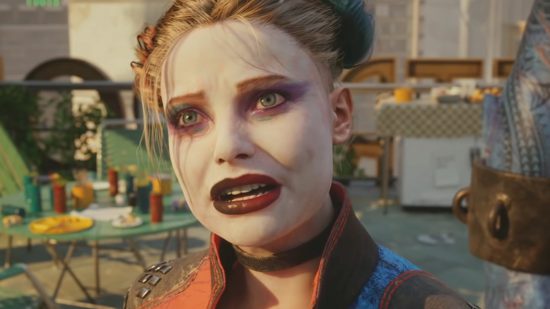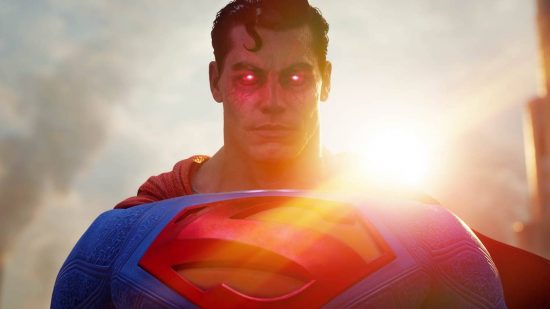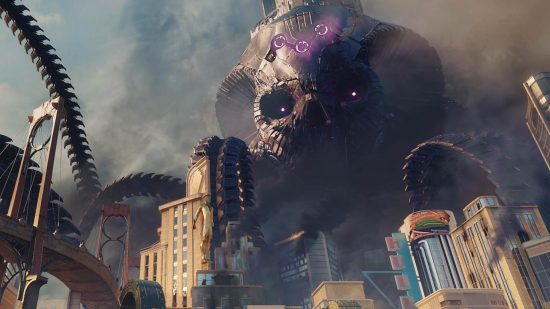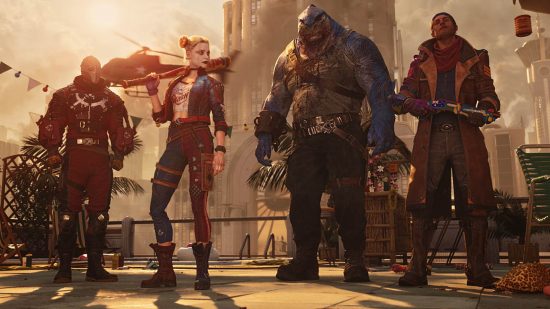Suicide Squad: Kill the Justice League is Rocksteady Studios’ first new game since Arkham Knight back in 2015. As an avid fan of the studio’s previous work and of the fact that this new game is supposed to take place in the Arkham universe, I am equal parts excited and anxious. Will the new game be able to live up to the sky-high reputation of its predecessors, or has the developer strayed too far from the path with its latest endeavor? Suicide Squad: Kill the Justice League has a lot riding on it, and these are the things that Rocksteady needs to get right.
First off, Suicide Squad needs believable boss fights. The squad of misfits is up against some of the heaviest hitters from the DC Universe, and even though the team has incredible skill sets, it’s still hard to believe that they would pose any real threat to the Justice League – especially when we already faced two of them before as Batman, and neither Deadshot nor Harley Quinn stood a chance against the Caped Crusader.

As far as we know, the League consists of, at least, Superman, Batman, Green Lantern, and the Flash. How will the Suicide Squad handle throwing down with people who can move faster than the speed of light and are capable of moving literal mountains with their bare hands? You always root for the underdog, but Rocksteady needs to put forward a reasonable scenario where the squad can win in a believable way.
Rockstar has already established that the group will get their hands on weapons capable of taking down metahumans, courtesy of none other than our favorite umbrella-wielding crime boss, Oswald ‘The Penguin’ Cobblepot. So maybe the right type of arsenal will do the trick. The earlier Arkham games boasted some memorable boss fights, from Killer Croc to Mr. Freeze, but Suicide Squad’s big bads need to come packing spectacular and convincing battles.
Another concern: Can a sunny Metropolis be as interesting as a grim Gotham? Will it be convincing as a real city, not a Fortnite map playground? Arkham Asylum, Arkham City, and Gotham are all depicted pitch perfectly in the earlier games, harkening back to the animated series and comics while developing their own identity and sense of place.
The grim aesthetics became one of the series’ defining features, and from what we’ve seen, Suicide Squad: Kill the Justice League is going in a more colorful, energetic direction. The action takes place in Superman’s home court, Metropolis, and the setting, as well as the tone, seem wildly different from the earlier Arkhamverse games. It’s always daytime, for starters, with the city boasting a clean, futuristic look.
And that sums up my main concern regarding the setting: Metropolis has never been that interesting a setting, while Gotham inherently is. Rocksteady needs to make its Metropolis feel like a natural expansion of the Arkhamverse, but there is a risk that it will come across as an overly videogame-y playground and therefore a disconnected setting from its predecessors.
But even if Rocksteady manages to create a captivating setting, it doesn’t mean much if the game lacks varied and entertaining action. Rocksteady invented and cultivated a new type of combat system with the original games, mixed with stealth and investigative sections. If Suicide Squad focuses solely on gunplay and traversal, it might be too one-sided for my taste. There is an equilibrium that needs to be maintained. With any luck, we will get slower-paced portions of the game as well, where you can wind down and take in the surroundings.
Finally – and this is possibly my most important point – any ‘games as a service’ element has to be as unobtrusive as possible. When the game was first introduced, the presence of GAAS elements, including a battle pass, the ‘always online’ internet requirement, and co-op-multiplayer, sparked some backlash from those hoping for a deep and engaging single-player game, more in line with what the studio has released before.
Just recently, however, Rocksteady revealed that an offline mode will be available eventually, but the battle pass and co-op multiplayer are still there. The GAAS model is not ideal – not least following Gotham Knights – but I have to hold out hope that it’s not overbearing, grindy, and harmful to the narrative. I take little issue with cosmetic add-ons, but we know the GAAS model infects every element of a game’s design at this point, regardless of how irritating the microtransactions may or may not be.
Fingers crossed Rocksteady will knock it out of the park, but with such a strong heritage, there’s a lot at stake. The studio’s sense of humor and attention to detail appear to be intact, and it is going to be interesting to see the results of such a protracted development cycle. I, for one, cannot wait to sink my teeth into what will hopefully be one of the best new PC games of 2024.



